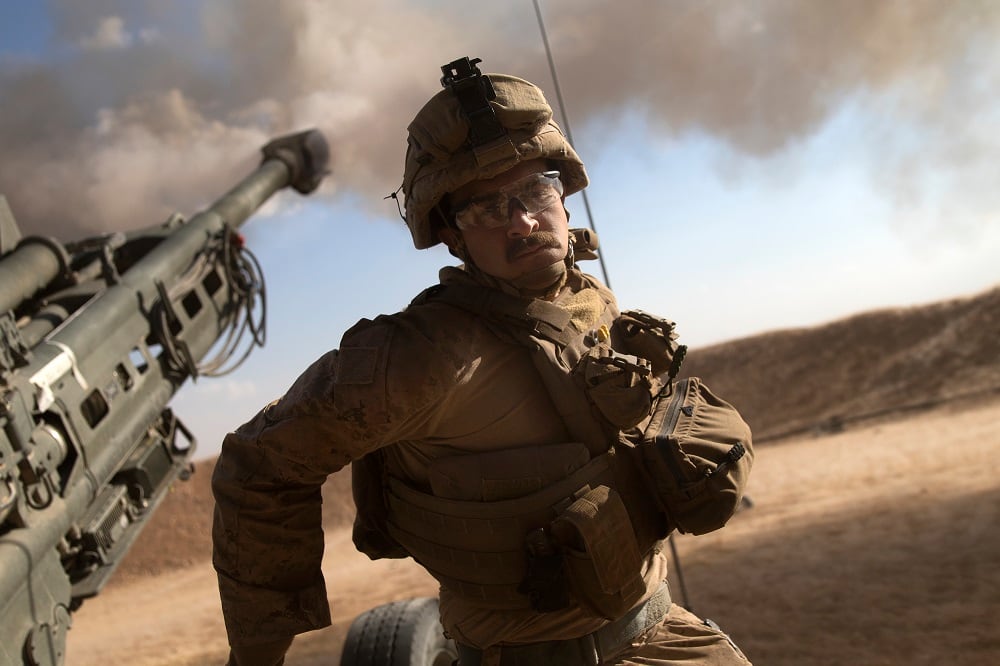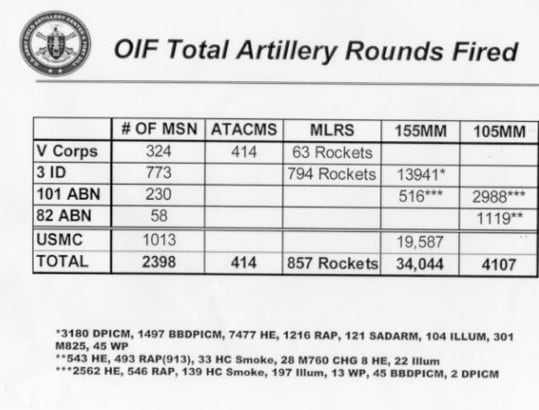A small Marine artillery battalion fired more rounds than any artillery battalion since Vietnam.
“They fired more rounds in five months in Raqqa, Syria, than any other Marine artillery battalion, or any Marine or Army battalion, since the Vietnam war,” said Army Sgt. Major. John Wayne Troxell, the senior enlisted adviser to the chairman of the Joint Chiefs of Staff.
It’s an explosive revelation that sheds light on the immense level of lethal force brought to Raqqa and northern Syria in support of U.S. counter-ISIS operations.
RELATED

“In five months they fired 35,000 artillery rounds on ISIS targets, killing ISIS fighters by the dozens,” Troxell told Marine Corps Times during a roundtable discussion Jan. 23. “We needed them to put pressure on ISIS and we needed them to kill ISIS.”
To put the numbers in context: During all of Operation Desert Storm, both the Marines and the Army fired a little more than 60,000 artillery rounds.
In the invasion of Iraq, just over 34,000 rounds were fired.
These figures are supported by documents provided to Marine Corps Times by Luke O’Brien, a former Army artillery officer and now historian, who acquired them from an Army historian at Fort Sill, Oklahoma.
The Marines brought the M777 howitzers ― a 155mm gun. A standard artillery battery has roughly six guns and up to 150 Marines; a battalion would include up to 18 guns or three firing batteries.
There were more than 730 howitzers supporting Operation Desert Storm.
In November, Marine Corps Times reported that the Marines supporting the Syrian Defense Forces managed to burn out a couple howitzer barrels ― an extremely rare feat.
“Because of all these rounds they were firing, we had to continue to recycle new artillery pieces in there because they were firing so much ammunition,” Troxell said.

In spring 2017, the small Marine artillery battalion for the 11th Marine Expeditionary Unit deployed to northern Syria to support America’s partner force Syrian Democratic Forces with 24-hour, all-weather fire support.
That unit was eventually replaced in April with another group of about 400 Marines.
In mid-October, just prior to the liberation of Raqqa, Troxell visited with the Marine unit for a period of roughly four hours.
“Every minute we were there we were putting some kind of ordnance or some kind of attack on ISIS,” Troxell told Marine Corps Times. “I couldn’t believe ISIS was still holding out.”
From June 2017 until Raqqa’s liberation in October, U.S. aircraft dropped just under 20,000 total munitions. Those numbers, from U.S. Air Forces Central Command, reflect strikes in Iraq as well.

Coalition aircraft supporting the liberation of Mosul and Raqqa still managed to drop less munitions than the 18 guns fired by the Marines in northern Syria.
“That’s a lot of rounds. Even on a daily average basis that’s a lot,” O’Brien said. “It certainly speaks to demand.”
The Corps’ mission to support the SDF with fires support ended shortly after Raqqa’s liberation. Those Marines have since returned home.
But the region’s fight against ISIS is still ongoing. The terror group has lost 95 percent of its held territory, but is still clinging on to remote villages along the middle Euphrates River valley.
Shawn Snow is the senior reporter for Marine Corps Times and a Marine Corps veteran.



